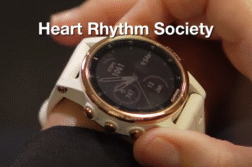MIAMI, Fla. (Ivanhoe Newswire) – Multiple myeloma is cancer of the plasma cells in the blood. Thirty-four-thousand Americans will be diagnosed with the disease this year, and 13,000 will die from it. Now, researchers say 9/11 first responders may be at much higher risk for developing the cancer. Blood cancer
September 11th is a day no American will forget. Now, 21 years later, scientists say first responders may be more likely to suffer from environmental exposures from carcinogens at the disaster site, putting them at risk for multiple myeloma.
C. Ola Landgren, MD, PhD, at the Sylvester Comprehensive Cancer Center of the University of Miami, explains, “Multiple myeloma is the second most common blood cancer that happen in adults.”
Dr. Landgren led a team of researchers screening the blood of consenting first responders, then, firefighters in an initial study, and then, other men and women who were on site, including police officers and EMS personnel. The blood tests showed high rates of myeloma precursor disease, that indicates someone is at risk for developing myeloma.
“That risk was about two times higher compared to the general population,” Dr. Landgren further explains.
There is no cure for multiple myeloma. Dr. Landgren says the study findings suggest that all emergency workers who will be exposed to high levels of carcinogens need to protect their lungs and skin.
Dr. Landgren adds, “If this is part of the job that individuals have, that they will be provided with appropriate protection devices and also that they use these devices.”
Some of the symptoms of multiple myeloma include pain in the back or bones, fatigue, anemia, and loss of appetite. Treatments include chemotherapy, and immunotherapy.
Contributors to this news report include Cyndy McGrath, Producer; Roque Correa, Editor.
To receive a free weekly e-mail on medical breakthroughs from Ivanhoe, sign up at: http://www.ivanhoe.com/ftk
Source:
MEDICAL BREAKTHROUGHS
RESEARCH SUMMARY
TOPIC: WORLD TRADE CENTER FIRST RESPONDERS: DOUBLE RISK FOR BLOOD CANCER
REPORT: MB #5124
BACKGROUND: Multiple myeloma is a cancer that forms in a type of white blood cell called a plasma cell. Healthy plasma cells help you fight infections by making antibodies that recognize and attack germs. In multiple myeloma, cancerous plasma cells accumulate in the bone marrow and crowd out healthy blood cells. Rather than produce helpful antibodies, the cancer cells produce abnormal proteins that can cause complications. This year, an estimated 34,470 adults (19,100 men and 15,370 women) in the United States will be diagnosed with multiple myeloma. Myeloma is less common than other types of blood-related cancers, such as leukemia and lymphoma. Worldwide, an estimated 176,404 people were diagnosed with multiple myeloma in 2020.
https://www.cancer.net/cancer-types/multiple-myeloma/statistics)
DIAGNOSING: Multiple myeloma often does not have early symptoms. This can make it difficult to diagnose in the beginning stages. Symptoms of multiple myeloma may include fractures, bone pain, fatigue and/or shortness of breath, confusion, numbness or weakness, leg swelling, appetite changes, frequent infection, and/or excessive thirst. To confirm a diagnosis, you might have blood tests including a complete blood count (CBC), it measures the different kinds of cells in your blood, or blood urea nitrogen (BUN) and creatinine, these check how well your kidneys are working.
(Source: https://www.mdanderson.org/cancer-types/multiple-myeloma.html)
NEW TECHNOLOGY: In 2021, the FDA approved idecabtagene vicleucel (Abecma®), and, in 2022, it approved ciltacabtagene autoleucel (also known as cilta-cel or Carvytki™). Both CAR T therapies target BCMA, and both approvals were for treating adults with relapsed or refractory (hard-to-treat) multiple myeloma. Newer trials, including at MSK, are testing CAR T therapy that targets a different protein, called GPRC5D. It’s always important to have more than one antigen to target, especially if the drugs aimed at the first antigen stop working.
FOR MORE INFORMATION ON THIS REPORT, PLEASE CONTACT:
Ann Dux
(305) 434-0711
If this story or any other Ivanhoe story has impacted your life or prompted you or someone you know to seek or change treatments, please let us know by contacting Marjorie Bekaert Thomas at mthomas@ivanhoe.com



